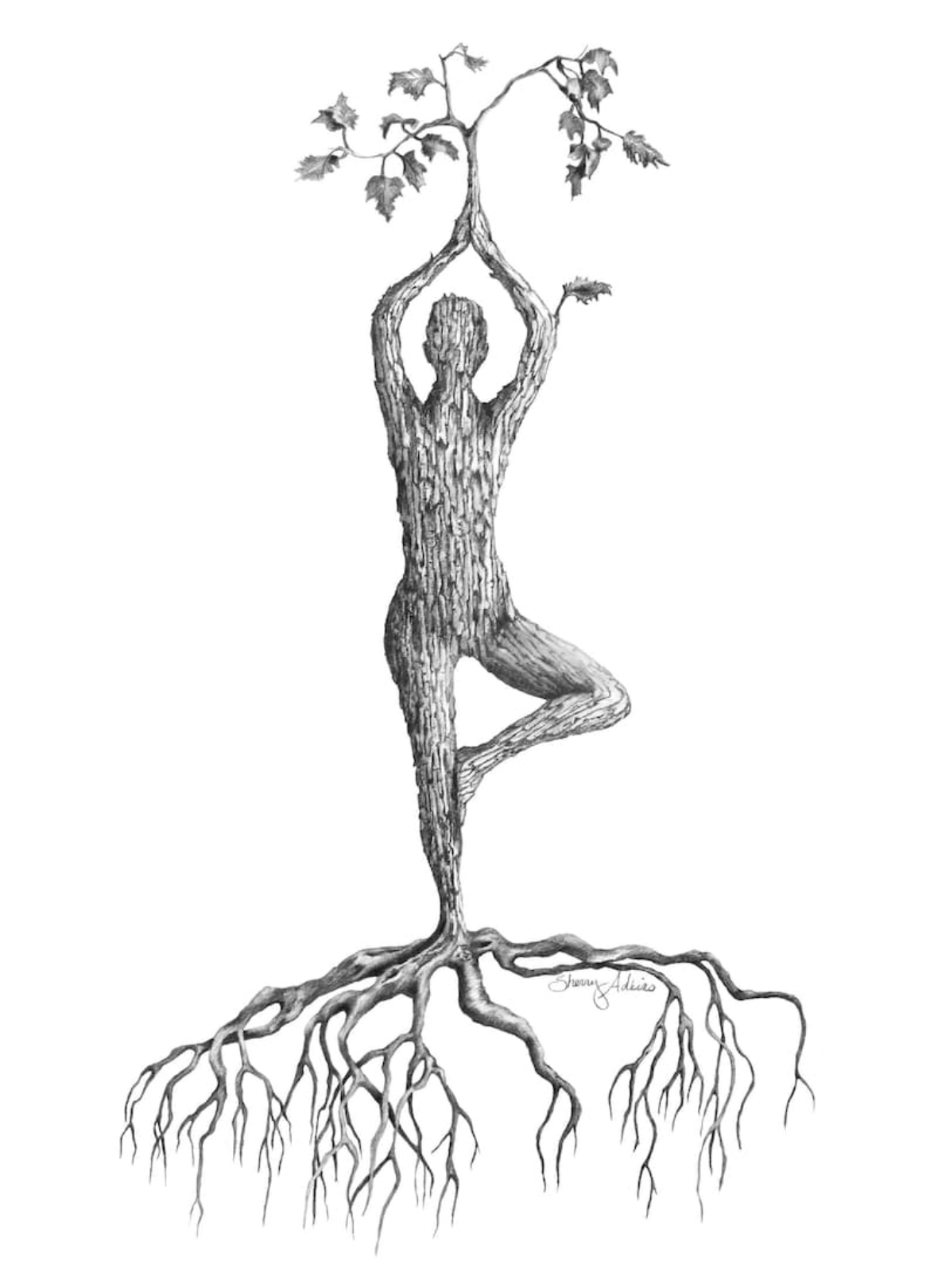Mood disorders are common, persistent, and disrupting, but tips in lifestyle and environment can turn aggravation into an improved mood. In addition, complementary therapies recommend nutrition, mind-body practices, massage, and acupuncture. These tested modalities along with any medical advice have proven to open the heart, quiet the mind, and cultivate an inner smile.
Recruiting the mind, body, and spirit to lift mood is the idea. Mental health is tied to physical and spiritual health. Since poor mental health is a risk factor for physical ailments, the lack of fitness increases the chance of moodiness. Gaining strength, flexibility, and coordination enhances focus, resilience, and social skills. Ideally, confidence, coping abilities, and motivation follow and balance our disposition. Tending to a spiritual practice expands conscious awareness through the body and mind sending forgiveness, hope, and trust to move freely within us.
Lifestyle
Exercise
Vigorous physical exercise is sometimes more effective than antidepressants in promoting positive moods. People who are sedentary report higher levels of fatigue in deprived exercise activity. Getting away from the computer in favor of the mat is a mood changer. In a meta-analysis of yoga therapy, five randomized controlled trials in adults suffering from depression all reported improved mood, better sleep, decreased obesity, lower risk of heart disease, and less chronic fatigue. Increased cognitive performance and less pain are other benefits of yoga asana.
Sleep
Sleep deprivation can lead to moodiness and insomnia is a symptom of depression. Remove the television from the bedroom so that it is for sleep only. Try taking a hot shower or listen to relaxing music before bedtime or read a positive inspiring book to set the tone for a restful sleep.
Nutrition
Healthy nutrition means optimum amounts of essential nutrients while avoiding or minimizing toxic substances. To start:
• Promote stable blood sugar with foods on the low glycemic index, such as proteins and complex carbohydrates.
• Eat breakfast to promote stable blood sugar throughout the day.
• Drink water. Eat fresh fruits and vegetables, legumes, grains, and fish. Meat and dairy, less than 10% of the daily diet.
• Limit products containing refined sugar and grains whenever possible. Same for sweetened and artificially sweetened beverages. Processed foods are usually high in artery clogging saturated fat as are fried foods and junk food.
The most common food sensitivities are wheat, corn, soy, dairy, eggs, tree nuts, shell fish, and peanuts. Food sensitivities can cause mood problems in addition to rashes, asthma, and rhinorrhea. (runny nose) Detection of food sensitivity begins with mindfulness. Noticing how we feel after a meal or the next morning. Changes can appear in the form of congestion, watering eyes, and lethargy. Eliminating that item and substituting it with something that the body recognizes as food will be evident by feeling good later. At the very least, experiencing the simple absence of discomfort is telling. Be accountable by keeping a food diary app. In some cases a blood test or skin testing may be necessary.
Other Food Susceptibilities Affecting Mood
- Trigger foods. Highly palatable taste sensations filled with sugar, salt, and fat that trigger binging.
- Recreational drugs. Managing moods by smoking, drinking alcohol, or taking drugs is an effort in futility. These things “get your mood-on” for the short term, but eventually lead to misery. Petrochemicals, artificial flavors, artificial colors, and artificial sweeteners are food additives and mood hazards. Avoid them by reading product labels.
An adequate intake of specific nutrients are essential to mood health. For efficient production of brain chemistry affecting mood such as serotonin made from tryptophan, B vitamins and zinc as cofactors, dopamine is boosted with vitamin D, magnesium and essential fatty acids.
Nutrients Essential for Mental Health and Their Food Sources
- Tryptophan: Turkey, chicken, and fish. Skim milk, cheese. Eggs. Soy and tofu. Sesame and pumpkin seeds. Peanuts and peanut butter.
- Vitamin B: Beans, nuts, legumes. Meats, and fish. Whole grains, fortified breads and cereals.
- Zinc: Oysters and the dark meat of poultry.
- Vitamin D: Fish, fish oils, and oysters. Fortified foods such as skim milk, soy milk, and rice milk.
- Magnesium: Chia seeds, cashews, oatmeal, avocado, brown rice, milk, whole wheat bread.
- Essential fatty acids: (Omega-3s) Fish, (tuna, salmon, and mackerel) fish oil, flax oil, dark green leafy vegetables.
Environment
A friendly environment is important for a healthy mood. Poverty, abuse, neglect, or absence of work or school can have adverse effects on mood that cannot be corrected through medications alone.
Community
Religion works for many people. Studies show that participating in a faith based or like minded community lowers the risk of depression by 20% compared to loners. The inherent features of community provide a sense of support and camaraderie. Numerous studies document the positive influence of sharing common bonds rather than a specific belief system.
Empowered by Nature
A continued field of inquiry explores the therapeutic effects of nature. Researchers have called this field biophilia, which emphasizes the connection to our natural environment and contact with animals. An Australian-based qualitative study in equine therapy examined biospychosocial outcomes of adolescents experiencing depression and/or anxiety. The findings suggest increased confidence, self-esteem and assertiveness. This form of therapy is particularly effective as it addresses emotions through direct experience and nonverbal communication.
Navigating Seasons
Songs, poems, and folk wisdom can dodge the blues during the winter months. The seasonal desynchronization of internal rhythms play an important role in mood disorders. Serotonin levels are lowest during the winter and Seasonal Affective Disorder has been well documented. Given the modern lifestyles of living indoors and traveling in enclosed vehicles, today’s society receives far less sunshine than ever. Bright light therapy is practical in the treatment of this type of condition. A 2019 study in the Journal of Frontiers In Psychiatry states bright light was as effective as the medication fluoxetine, but with a higher rate of remission.
Environmental Toxins
Heavy metals like lead and mercury and especially carbon monoxide poisoning are also associated with depressive symptoms. Checking for toxins and avoiding them may help improve mood. The accumulated ingestion of pesticides has recently been associated with attention-deficit/hyperactivity disorder.
Another type of environmental toxin is comparing oneself to others. TV and marketing increases the likelihood that comparisons to others seemingly more attractive, intelligent, successful, etc. is harmful. Media platforms and news analysis are relentless in grim reports that can dampen anybodies spirit. Take a break from current events with “appreciation audits” by making a list of things to be grateful for or simply noting simple acts of kindness.
Mind–Body Therapies
Practicing yoga beyond the asanas is designed to improve mood with even more substantial benefits. The Eight Limbs of Yoga is a useful guide to sustain mood balance and equanimity. In fact, yoga postures are merely one aspect of this process. These eight easy steps offer quick results to ease internal and external restlessness.
As part of the Eight Fold Path, meditation alters mood and can change brain patterns beneficially. Meditation training leads to significant increases in left-sided anterior activation, a pattern associated with relaxation. Long-term meditators exhibit increased cortical thickness in brain regions associated with attention and sensory processing. The effects of meditation may include improved ability to cope with stress, reduced pain, reduced anxiety, and increased immune function. A regular asana practice also strengthens the body to sit more comfortably during meditation.
Dialectic Behavior Therapy
Dialectic behavior therapy is a psychosocial therapy based in cognitive behavior and mindfulness. Originally designed for chronically suicidal patients with borderline personality disorder, dialectic behavior therapy helps people build awareness about their emotional states and how to gain control over them. This technique works well for chronic mood issues and oppositional defiant disorders. A year long open trial with bipolar youth also found promising beneficial effects.
Gaining control over mood also involves quieting the mind. Observing the existence of one’s consciousness and just being aware of thoughts differentiates ourselves from feelings, emotions and the chattering mind. Simply put: subject-object. “If I’m looking at something, then it is not me.” In this way one chooses to look at a thought instead of getting caught up in the mental chaos. The observer has a quality of awareness, consciousness, and an intuitive sense of existence. This is the lucid self.
The more you are willing to let the world be something you’re aware of, the more it will let you be who you are; the awareness. –Singer, Untethered Soul)
Massage
Massage is used widely to improve mood. Therapeutic massage increases blood flow and lymphatic drainage, muscle relaxation, and stress reduction. Physiologically, massage balances right and left prefrontal cortex activity. Furthermore, massage decreases cortisol levels and increases levels of serotonin and dopamine in patients who have depression. Massage is good for kids too.
Considerable research has been published on the negative effects of maternal depression on childhood mental health. Depressed mothers who received massage gave birth to infants who scored higher on various measures on the Brazelton Scale reducing the ensuing emotional risk to the unborn child.
Acupuncture
Acupuncture healing involves the stimulation of very thin needles on specific energy channels in the body. Studies suggest it has helped depressed adults and may be comparable in effectiveness to antidepressant medications. In general, acupuncture has fewer side effects than medications and serious side effects are rare.
In closing, most complementary therapies have been in use for hundreds or even thousands of years. Many have not been rigorously tested because their subjective nature makes it difficult to evaluate scientifically. Fortunately, more research is being done as The National Center for Complementary and Alternative Medicine at the National Institutes of Health regularly update the public on the use of nonconventional treatments. As always, check with your health care provider to see what’s right for you.
Peace.
Published: Yoga+Life Magazine




